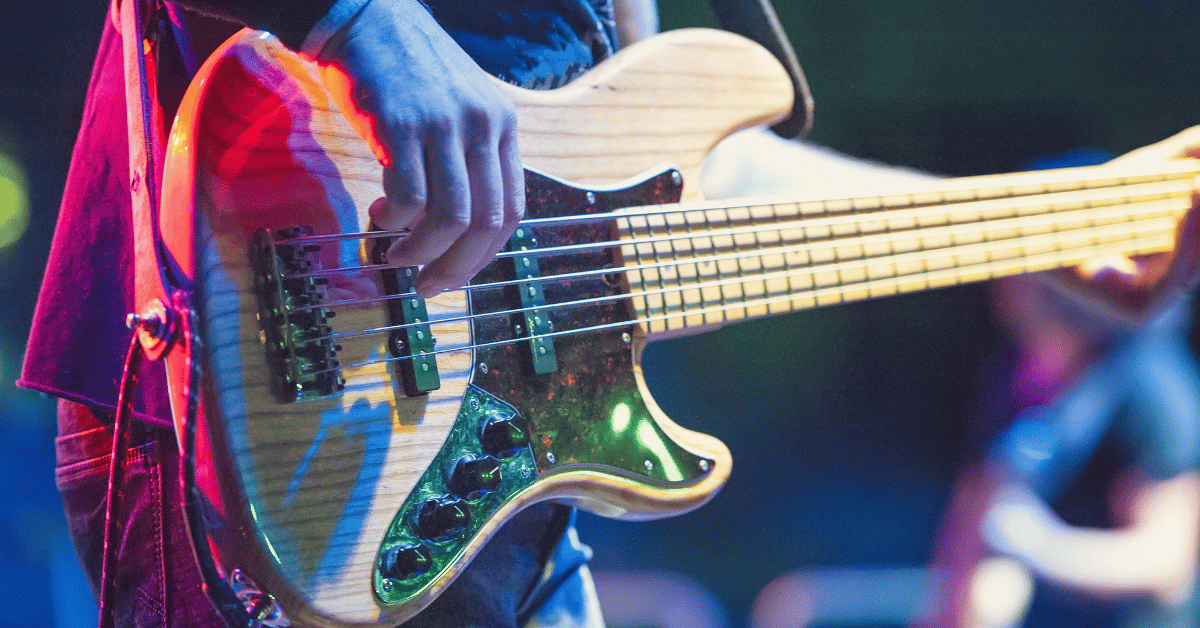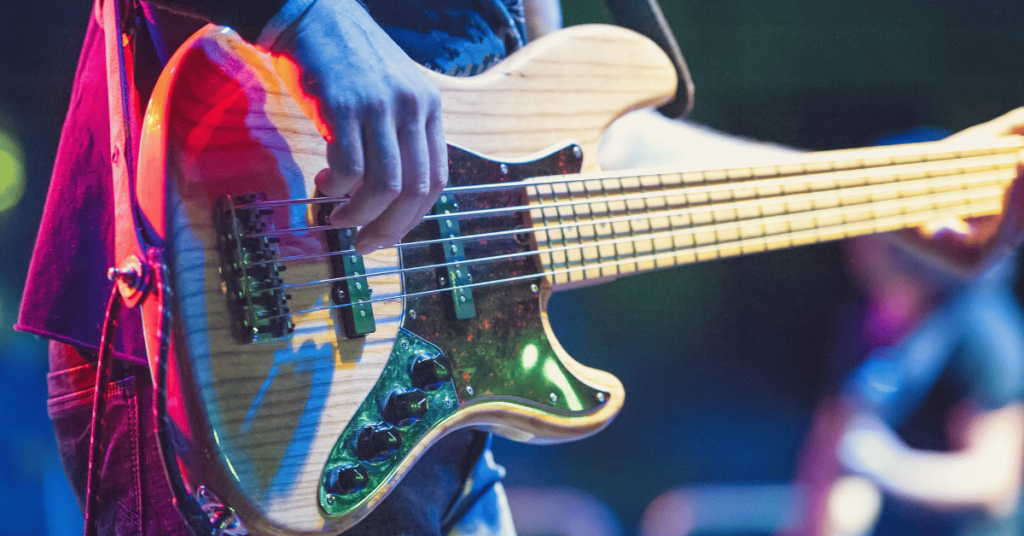The right cables are everything when it comes to getting the most out of your gear, but don’t just take our word for it.
To tell you everything you need to know, we partnered with one of the greatest cable masters there is, Austin Woodruff over at Runway Audio! Here he breaks down how your cables could be the difference between your gear sounding amazing or not so hot. The right cables make a world of difference in the audio quality you get from your gear & crazy enough, it’s quite easy to hear too!
Our team & the guys over Runway Audio want you to have the best quality possible!
So we partnered with the Runway Audio team to get you 15% off all your cable purchases. Click the box below to redeem your coupon code! If you are ordering for your church, The Runway team has an even better deal for you if you’re order in bulk. Click the link & let’s jump in!
The most overlooked part of guitarist’s rig is the cables.
When your eyes are fixed on saving up for the next pedal, amp, guitar, or any other major piece of gear it’s super easy to forget about cables. It is often the case that we will spend $1200 on our guitar, $1500 on our amp, $1500 on our pedalboard, and then buy the cheapest cables we can find to wire it all up.
There’s nothing necessarily wrong about this, it’s just that we aren’t letting our sound reach its full potential.
FOR EXAMPLE: Take a really expensive high-performance car and then buy the cheapest tires on the market for it. Although it doesn’t lessen the quality of the car itself, our cheap tires limit our ability to enjoy everything the car has to offer. If we could just invest a little more to get high-quality tires, the car would drive like a dream and function to its full potential.
The same thing applies to our gear and cables.
Let’s break down the key aspects of high-quality cables by first talking about CAPACITANCE.
What is Capacitance?
In high-quality cables, you will find lower capacitance.
What the heck does that mean?
Let me explain. When we have two or more conductors (ie: wires) closely separated, they can store a charge. The storing of charge by these wires is called capacitance. This is what goes on in a guitar cable with wires twisted together separated by a small insulator. The level of capacitance in a cable has everything to do with its design.
So, why does this side effect of capacitance matter?
Well, remember when I mentioned that capacitors store charge? When a guitar generates a voltage signal (from a strum), current flows through the cable and wants to store these charges. The higher the frequency, the more the current.
The ability to pass these currents is measured in picofarads per foot (pF/ft). Higher numbers of pF/ft result in the cable acting as a low-pass filter; causing for the loss of higher frequencies by the time they reach the amp. From this, we can lose many harmonics that make our tone shine.
Lower capacitance eliminates any potential “tone loss” in our signal.
What people mean when they say “tone loss” is the loss of high-end frequencies in their signal. Thus, we want the least amount of capacitance we can.
There are two ways to do this:
-
Use shorter cables.
-
Use cables with low capacitance ratings.
To put this into perspective, let’s talk about pedalboards.
If you have 8 pedals all connected with 6” standard house-brand cabling, measured at 100 pF/ft, that is 350 picofarads on your board alone. By using professional grade cabling (Runway Audio’s measures at 20 pF/ft) you decrease that number substantially.
For example, Runway Audio’s cables bring your pedalboard down 70 picofarads across the entire board; which is a little more than a single 6” house-brand patch cable! As this scales to 20 ft, 25 ft, and 30 ft instrument cables, the tone loss compounds exponentially.
When most people start using cables with less capacitance, they describe it as though you took a blanket off of your guitar amp.
You’ll be able to hear and feel your guitar with its full potential no matter who you are! Even my Mom, who doesn’t play music at all, can clearly hear the difference.
The next thing we need to explore on our journey through why your cables matter is shielding.
Why Does Shielding Matter?
In high-quality cables you’ll find braided shielding as opposed to spiral or foil shielding. This is the strongest shielding you’ll find in an instrument cable. It protects against interference like EMI and RFI even when the cable is bent and/or spiraled.
Have you ever heard a cellphone buzz or a radio station come through your signal chain?
That’s interference you can avoid with better shielding!
Braided shielding coverage is measured in a percentage. So the higher the percentage, the better the protection. You will typically see braided shielding coverage range from 40% to 95%. Our Runway Audio cables have a 95% braided shield because we know how important it is to avoid these interferences.
What’s the Difference Between TS & TRS Cables?
Alright, so this is another topic that gets brought up a lot when talking about cables. When you look at the two cables, there are almost no differences and they are easy to mix up. At its core, a TS (Tip, Sleeve) cable is unbalanced, meaning there are only two wires inside the cable itself. Your TS cable is going to be your standard for most applications and is the normal instrument cable you probably already use.
On the other hand, TRS (Tip, Ring, Sleeve) cables are balanced and have three wires inside making them ideal for long cable runs and avoiding noisy interference. These are less common but have their specific uses. A TRS cable is similar, in practice, to the XLR (Microphone) cables you are using, they just use a different looking plug. Another difference is that TS cables pass mono signals and TRS cables pass stereo (as well as mono) signals.
So when should you use a TS or TRS cable?
Use a TS cable for:
- Guitars
- Pedals
- Anything plugging into a direct box (acoustic guitars, bass, keys, etc.)
Use a TRS cable for:
- Balanced signals
- Stereo outputs
- Amp/Tap/Expression Controls
What to Look for When Buying Your Next Cable
If you know the difference between cheap cables and quality cables, you’ll know the specifics you should look for. If the manufacturer isn’t listing some of these details, then it’s probably because the numbers aren’t so great.
Some manufacturers will even go as far as to say their cable is meant for a specific instrument or a specific genre in order to avoid any of the specifics about their cable. A great cable works for everything and can do anything, simple as that.
As far as your basic TS instrument cables go, you want a cable with a low capacitance, a quality shield, and a lifetime warranty. This makes sure you’re getting the absolute most from your sound and buying a cable that will last a lifetime.
Here at Runway Audio, we are pretty partial to our own instrument cables because we have spent the time making sure each component is the best it can be. We have all of our specs listed on our site so you, as a buyer, can know that you are getting the best cable available. Our cables also have a lifetime warranty, so you know this will be the last cable you ever have to buy.
So Why Spend the Money?
High-quality cables last longer & sound better. Over time you’ll waste more money on replacing cheaper worse sounding cables than if you make the investment upfront in the quality your gear deserves.
One of the biggest downsides to low-quality cables is that the cheaper components break easier and more often. You should not have to replace cables. High-quality cables include quality plugs that are designed to last through the test of corrosion and high use. This will protect against signal dropouts and deterioration in general. Not to mention, the braided shielding mentioned earlier will also help protect the wires within the cable.
Runway Audio’s cables even include TechFlex that covers the outside of the cable to protect it from being stepped on or even slashed by a cymbal. Oh, and it looks pretty cool too! Along with colors, buying a high-quality cable allows you to customize your own cable for exactly what you need. This means you get to pick the length, the plugs, and even the color.
The final question we want to ask you is this:
Are you keeping your gear from sounding as good as it could because of the low-quality cables in your signal chain?
If so, we’d love for you to click the link below and take the next step towards unlocking the sound your gear’s waiting to unleash.






